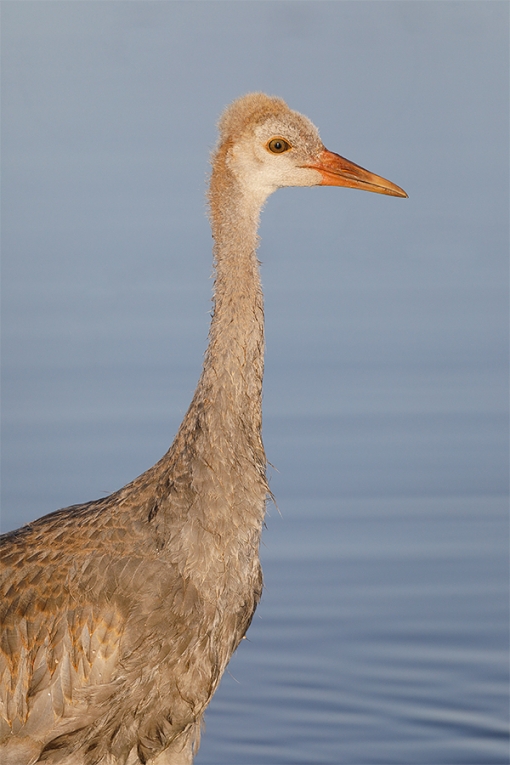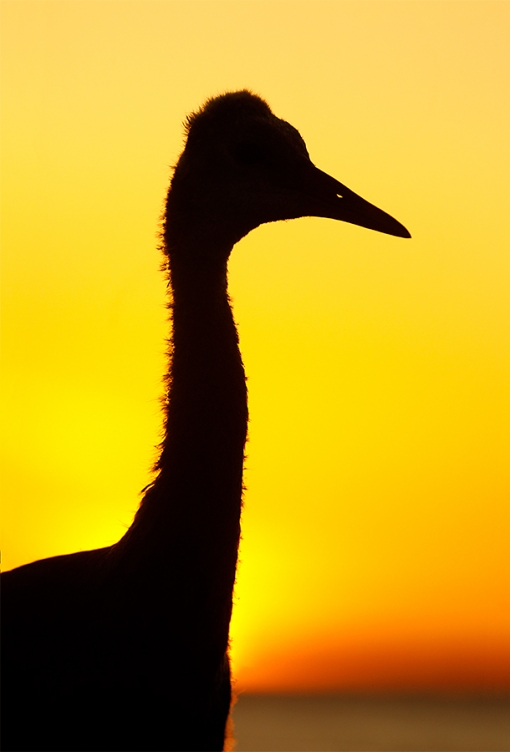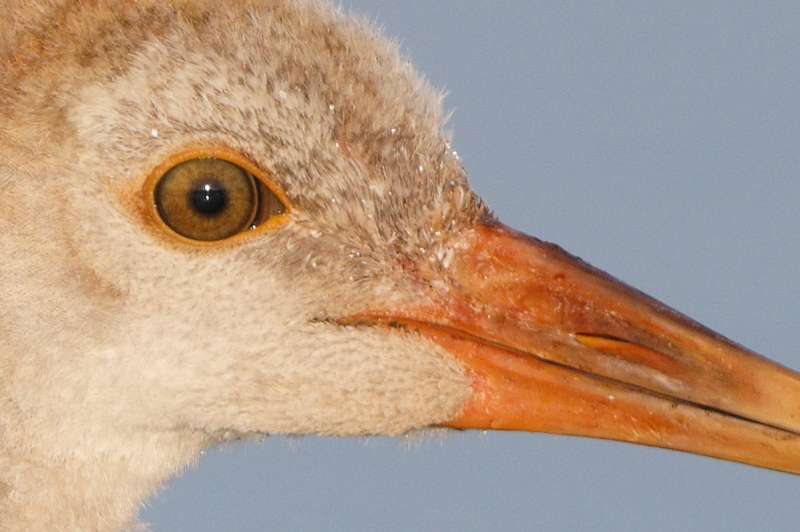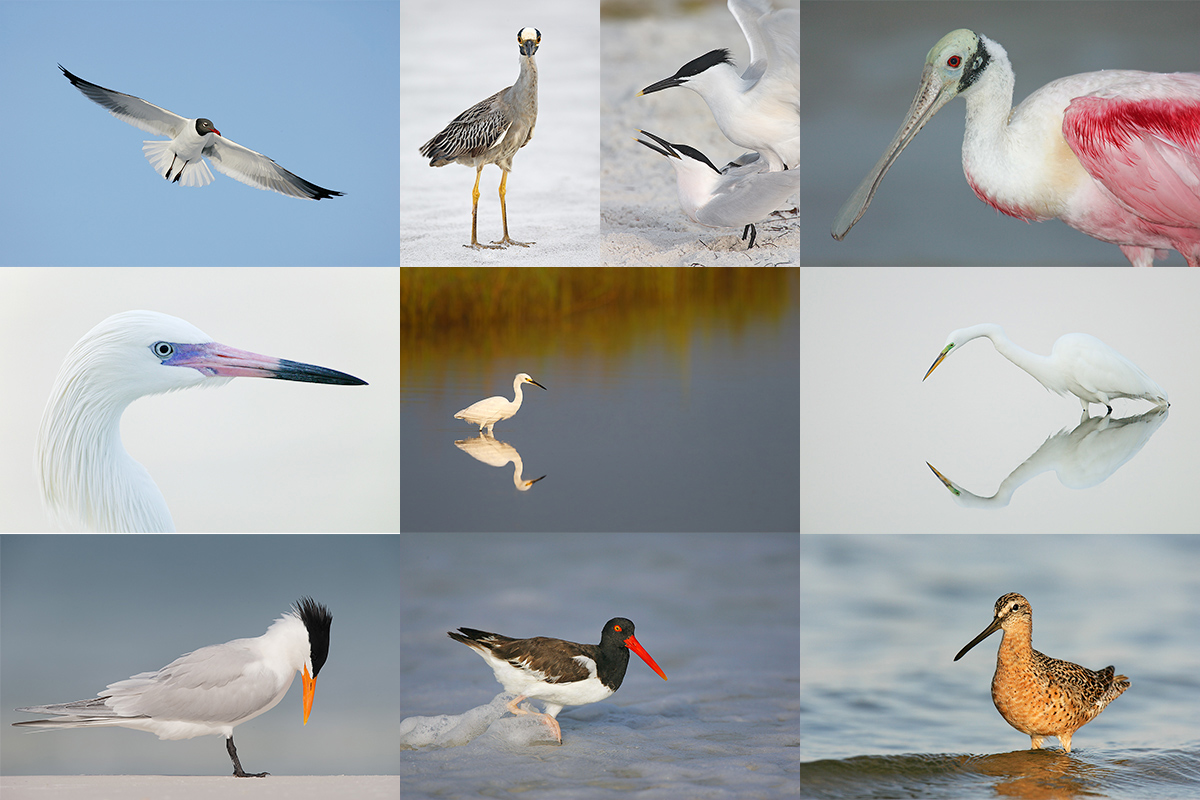What’s Up?
Saturday morning at Gatorland was quite good. Client Ray Martinez, originally from Venezuela, brought along his friend – Alex Fuenmayor, also from Venezuela. They have been great friends since 5th grade. Ray is the sole staff photographer for Kansas State University. He does events, staff, sports, and the graduation photos. In short he photographs pretty much anything and everything that needs to be photographed. When he grows up he wants to be a professional nature photographer and tour leader 🙂 We had fun. Mazel tov to Ray who will be getting married in three weeks.
Saturday afternoon was very good as well.
Gear Questions and Advice
Too many folks attending BAA IPTs and dozens of folks whom I see in the field, and on BPN, are–out of ignorance–using the wrong gear, especially when it comes to tripods and more especially, tripod heads… Please know that I am always glad to answer your gear questions via e-mail.
The Streak: 30!
Today’s blog post marks a totally insane, irrational, illogical, preposterous, absurd, completely ridiculous, unfathomable, silly, incomprehensible, what’s wrong with this guy?, makes-no-sense, 30 days in a row with a new educational blog post. As always–and folks have been doing a really great for a long time now–please remember to use our B&H links for your major gear purchases. For best results use one of our many product-specific links; after clicking on one of those you can continue shopping with all subsequent purchases invisibly tracked to BAA. Your doing so is always greatly appreciated. Please remember: web orders only. And please remember also that if you are shopping for items that we carry in the BAA Online Store (as noted in red at the close of this post below) we would of course appreciate your business.
|
|
|
This image was created down by the lake at ILE on the morning of April 13, 2017 at 07:48:07am with the hand held Canon EF 100-400mm f/4.5-5.6L IS II USM lens, the Canon Extender EF 1.4X III (at 560mm) and my favorite bird photography camera body, the Canon EOS 5D Mark IV. ISO 800. Evaluative metering at about +2/3 stop: 1/1250 sec. at f/9 in Manual mode. AWB. LensAlign/FocusTune micro-adjustment: 1. Four AF points up from the center AF point/AI Servo/Shutter button AF was active at the moment of exposure as framed. The selected AF point was on the top of the bird’s neck just below and a bit behind the chin, right on the plane of the colt’s eye. Image #1: Sandhill Crane colt tight front end vertical |
What a Difference the Light Makes, Only 12 Little Hours …
With apologies to Dinah Washington (What a Difference a Day Makes, 24 little hours …) the light for these two images –made within a minute or two of being exactly 12 hours apart — could hardly have been more different. For the first image, I had my shadow pointed right at the subject. For the second image, my shadow — not that there was much of one — was pointed directly away from the subject. In each case, the sun, the subject, and I were all on the same line, just in a different order. When creating frontlit images like Image #1, the order should be the sun (behind) me, then me, and then the subject, all on the same line. For backlit and silhouetted images, we want me, then the subject, and then the sun all on the same line. In image #2 here the sun was directly behind the bird’s body right at the horizon line, just as it should have been. When working with a backlit subject, the closer you come to a straight line, the stronger the backlight will be and the more intense the color will be. So frontlit or backlit, strive to get everything on the same straight line.
|
|
|
This image was created down by the lake at ILE on the late afternoon of April 13, 2017 at 19:46:22 (7:26:22)pm with the hand held Canon EF 100-400mm f/4.5-5.6L IS II USM lens, the Canon Extender EF 1.4X III (at 437mm) and my favorite bird photography camera body, the Canon EOS 5D Mark IV. ISO 800. Evaluative metering at about +2/3 stop: 1/640 sec. at f/9 in Manual mode. AWB. LensAlign/FocusTune micro-adjustment: 0. Upper Large Zone AF/AI Servo/Shutter button AF was active at the moment of exposure as framed and produced a very sharp image. That despite the fact that the two active AF points were on the sky below the colt’s head and in front of the neck; the system was still tracking properly. Image #2: Sandhill Crane colt tight front end vertical sunset silhouette |
Micro-adjustment Question
Same camera body, same TC, and same lens; why are the different micro-adjustment values for today’s two featured images?
|
|
Image #3: This is an unsharpened 100% crop of Image #1 |
Canon 100-400II/1.4XIII/5D IV Sharpness and Image Quality
Taking a look at the unsharpened 100% crop of Image #1 immediately above how would you judge the sharpness and image quality? I’d have to say that both were pretty darned good if not spectacular.
The Canon 100-400III/1.4XIII/5D IV Combo
I find the Canon 100-400II/1.4XIII/5D IV combo incredibly useful and incredibly versatile. I use it in two ways. At times, when working with subjects at close range and/or when I simply go light, it is the only rig I take into the field. Often it serves as my auxiliary intermediate telephoto lens when my main rig is the Induro GIT 304L/Mongoose M3.6-mounted 500 II or the 600 II. Either way the lens is on my right shoulder supported by the new Black Rapid Curve Breathe Camera Strap. I have been using the Canon 100-400II/1.4XII/5D IV combo so much over the past few weeks that I am developing a nasty callous on the inside or my right thumb where it hits the grip …
|
DeSoto in spring is rife with tame and attractive birds. From upper left clockwise to center: breeding plumage Dunlin, dark morph breeding plumage Reddish Egret displaying, breeding plumage Laughing Gull/front end vertical portrait, breeding plumage Laughing Gull with prey item, Laughing Gull on head of Brown Pelican, screaming Royal Tern in breeding plumage, Royal Terns/pre-copulatory stand, Laughing Gulls copulating, breeding plumage Laughing Gull/tight horizontal portrait, Sandwich Tern with fish, and a really rare one, White-rumped Sandpiper in breeding plumage, photographed at DeSoto in early May. |
Fort DeSoto Spring IPT/April 19-22, 2017. (Meet & greet at 2pm on Wednesday April 19 followed by an afternoon session) through the full day on Saturday April 22. 3 1/2 DAYs: $1599. Limit 10/Openings 2. To save your spot, please call and put down a non-refundable deposit of $499.00.
Call 863-692-0906 or e-mail for late registration discount e-mail.
Fort DeSoto is one of the rare locations that might offer great bird photography 365 days a year. It shines in spring. There will Lots of tame birds including breeding plumage Laughing Gull and Royal and Sandwich Terns. With luck, we will get to photograph all of these species courting and copulating. There will be American Oystercatcher and Marbled Godwit plus sandpipers and plovers, some in full breeding plumage. Black-bellied Plover and Red Knot in stunning breeding plumage are possible. There will be lots of wading birds including Great and Snowy Egrets, both color morphs of Reddish Egret, Great Blue, Tricolored and Little Blue Heron, Yellow-crowned Night-Heron, and killer breeding plumage White Ibis. Roseate Spoonbill and Wood Stork are possible and likely. We should have lots of good flight photography with the gulls and terns and with Brown Pelican. Nesting Least Tern and nesting Wilson’s Plover are possible.
We will, weather permitting, enjoy 7 shooting sessions. As above, our first afternoon session will follow the meet and greet at 2pm on Wednesday April 19. For the next three days we will have two daily photo sessions. We will be on the beach early and usually be at lunch (included) by 11am. We will have three indoor sessions. At one we will review my images–folks learn a ton watching me choose my keepers and deletes–why keep this one and delete that one? The second will be a review of your images so that I can quickly learn where you need help. For those who bring their laptops to lunch I’d be glad to take a peek at an image or three. Day three will be a Photoshop session during which we will review my complete workflow and process an image or two in Photoshop after converting them in DPP. Afternoon sessions will generally run from 4:30pm till sunset. We photograph until sunset on the last day, Saturday, April 22. Please note that this is a get-your-feet and get-your-butt wet and sandy IPT. And that you can actually do the whole IPT with a 300 f/2.8L IS, a 400 f/4 ID DO lens with both TCs, or the equivalent Nikon gear. I will surely be using my 500 II as my big glass and have my 100-400 II on my shoulder.
|
DeSoto in spring is rife with tame and attractive birds. From upper left clockwise to center: Laughing Gull in flight, adult Yellow-crowned Night-Heron, copulating Sandwich Terns, Roseate Spoonbill, Great Egret with reflection, Short-billed Dowitcher in breeding plumage, American Oystercatcher, breeding plumage Royal Tern, white morph Reddish Egret, and Snowy Egret marsh habitat shot. |
What You Will Learn
You will learn to approach free and wild birds without disturbing them, to understand and predict bird behavior, to identify many species of shorebirds, to spot the good situations, to understand the effects of sky and wind conditions on bird photography, to choose the best perspective, to see and understand the light, to get the right exposure every time after making a single test exposure, and to design pleasing images by mastering your camera’s AF system. And you will learn how and why to work in Manual mode (even if you are scared of it).
The group will be staying at the Holiday Inn Express in St. Petersburg. (Write for a less expensive option). Please call Jim or Jennifer at 863-692-0906 to register. All will need to purchase an Annual Pass early on Tuesday afternoon so that we can enter the park at 6am and be in position for sunrise opportunities. The cost is $75, Seniors $55. Tight carpools will be needed and will reduce the per person Annual Pass costs. The cost of three lunches is included. Breakfasts are grab what you can on the go, and dinners are also on your own due to the fact that we will usually be getting back to the hotel at about 9pm. Non-photographer spouses, friends, or companions are welcome for $100/day, $350 for the whole IPT.
BIRDS AS ART Fort DeSoto In-the-Field Meet-up Workshop (ITFW): $99
Fort DeSoto Spring In-the-Field Cheap Meet-up Workshop (ITFW) on the morning of Sunday, April 23, 2017: $99
Join me on the morning of Sunday April 23, 2017 for 3-hours of photographic instruction at Fort DeSoto Park. Beginners are welcome. Lenses of 300mm or longer are recommended but even those with 70-200s should get to make some nice images. Teleconverters are always a plus.
You will learn the basics of digital exposure and image design, autofocus basics, and how to get close to free and wild birds. We should get to photograph a variety of wading birds, shorebirds, terns, and gulls. This inexpensive morning workshop is designed to give folks a taste of the level and the quality of instruction that is provided on BIRDS AS ART Instructional Photo-tours. I hope to meet you there.
To register please call Jim or Jennifer during weekday business hours with a credit card in hand to pay the nominal registration fee. Your registration fee is non-refundable. You will receive a short e-mail with instructions, gear advice, and meeting place one week before the event.


Please Remember to use my Affiliate Links and to Visit the New BAA Online Store 🙂
To show your appreciation for my continuing efforts here, we ask, as always, that you get in the habit of using my B&H affiliate links on the right side of the blog for all of your photo and electronics purchases. Please check the availability of all photographic accessories in the New BIRDS AS ART Online Store, especially the Mongoose M3.6 tripod head, Wimberley lens plates, Delkin flash cards and accessories, and LensCoat stuff.
As always, we sell only what I have used, have tested, and can depend on. We will not sell you junk. We know what you need to make creating great images easy and fun. And please remember that I am always glad to answer your gear questions via e-mail.
I would of course appreciate your using our B&H affiliate links for all of your major gear, video, and electronic purchases. For the photographic stuff mentioned in the paragraph above, and for everything else in the new store, we, meaning BAA, would of course greatly appreciate your business. Here is a huge thank you to the many who have been using our links on a regular basis and those who will be visiting the New BIRDS AS ART Online Store as well.
Be sure to like and follow BAA on Facebook by clicking on the logo link upper right. Tanks a stack.
Typos
In all blog posts and Bulletins, feel free to e-mail or to leave a comment regarding any typos or errors. Just be right :).



















Can we know the answer to this question ?
Yes. Randy Lowden and one other gave the correct answer below:
I know that answer to this one. The lens was micro-adjusted at both ends of the zoom range. In this case the results were different depending on the focal length setting at the time of the test.
Assuming that the W and the T setting are different, the camera automatically adjusts the micro-adjustment as you zoom in or out 🙂
with love, artie
You wanted the sharp portion to be a bit further back in image 2.
Nope 🙂
a
When shooting with the intermediate range (focal length) of a zoom lens the AF’s point of focus is adjusted automatically relative to the adjustments made for the wide angle and telephoto ends.
Yes, as noted below by Randy Lowden and my reply.
love to all, artie
I agree with Krishna: two different camera bodies.
Nope. Same body 🙂
with love, artie
Hi Artie,
Thanks for challenging us with the Lens Align Micro-Adjustment Question.
Here goes !!!
Two separate AF techniques were used for the two images-Image #1-Single Point Auto Focus was selected and the Lens MA of -1 was applied to the one AF point. Image #2- Zone Focus-The camera’s AF system selected two AF points. The camera is unable to Lens MA two points together in one image, so the camera did not apply the Lens MA, hence the setting of zero.
May I also assume that you were using Live Mode (for eye protection from the sun) in Image #2 ? If so, the Lens MA is disabled in LV Mode, hence zero. (Per the Camera Instruction Manual).
Thanks for the challenge with the question. Looking forward to your comments.
And I am still reeling from the morning at Right Whale Bay with you last November.
Hope you are well and we can reconnect one day. Take care.
Sincerely,
Kent Downing
Nope, nope, and nope. Answer soon. 🙂
Hey, think about my Falklands trip late DEC 2018; it is getting closer each day 🙂 The freedom is amazing and no zodiacs!!! Only three spots left.
later and love, artie
Selected vs Active AF Points in the two images.
Image 1 acquired proper focus by selecting the AF Point.
Image 2 was unable to acquire AF because the two AF Points were still active at time of exposure. Therefore no Lens MA was applied.
Will you offer a Falklands trip in 2019? I have a commitment for 2018. Thanks Artie.
Cheers
Kent
As always great learning from your Blog.
I think you are having 2 5D Mark IV Cameras and hence the two Micro Adjustments.
No sir 🙂
a
I think its a trick question. I was going to guess as Randy did, but guess not. Wha’da do, go redo the lens. I don’t know anything in the 5DIV that would make that change automatically, or any other Canon for that matter. So if you did not make the between sessions, you had to do it on the spot. But why? Going from +1 to 0 would bring the plane of focus a little more toward you, but at f/9, considering the depth of field, what good would that do for you? Bottom line, I have no clue why you would make that adjustment. You have asked some tricky ones in the past, but this is a doozer. I look forward to hearing the answer.
Not me 🙂
a
Thank you so much for everything, Artie! Alex and I had a great time, and hope to see you next spring in KS!
I had a great time too. Thanks again for coming. And get in touch with me a few months before on a potential visit.
with love, artie
Always enjoy your daily blog… Happy Easter… Enjoy your Day…
Did and ditto 🙂
with love, artie
Hi Artie, great work as usual. I don’t think you are using 1.4XII extenders yet that it what is in the headers of this blog in several places. Is it just a typo? Should it be 1.4XIII?
Thanks. And yes typos 🙁 Even in the title! All fixed I think.
a
I know that answer to this one. The lens was micro-adjusted at both ends of the zoom range. In this case the results were different depending on the focal length setting at the time of the test.
Oh, so you think you know the right answer …
later and love, artie
Love the color gradients on the second photo.
I’m going to take a guess that the different micro-adjust values are due to use of a custom shooting mode (C1 – C3) that was setup prior to your last MFA session? One photo was shot in zone AF and the other in single point manual selection AF, that’s typically how I choose to use the custom mode dial option.
Thanks and nope 🙂 With love, artie